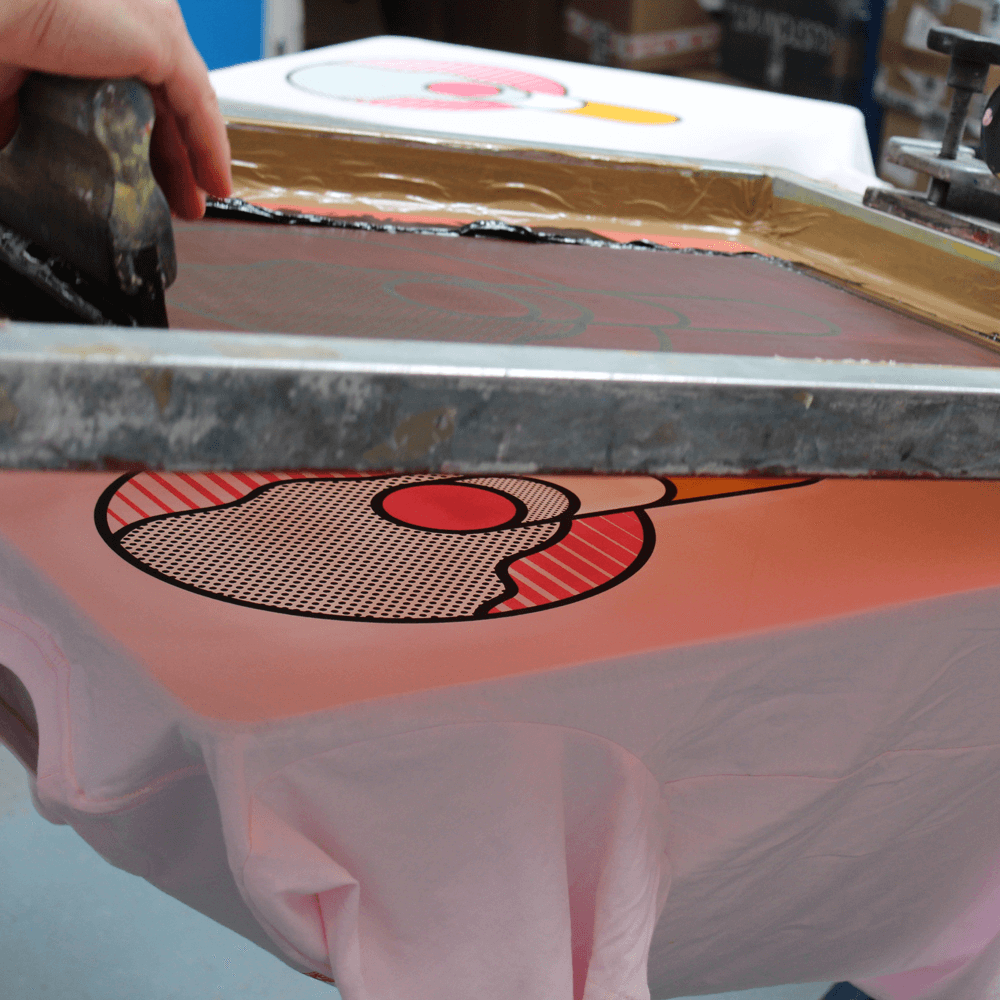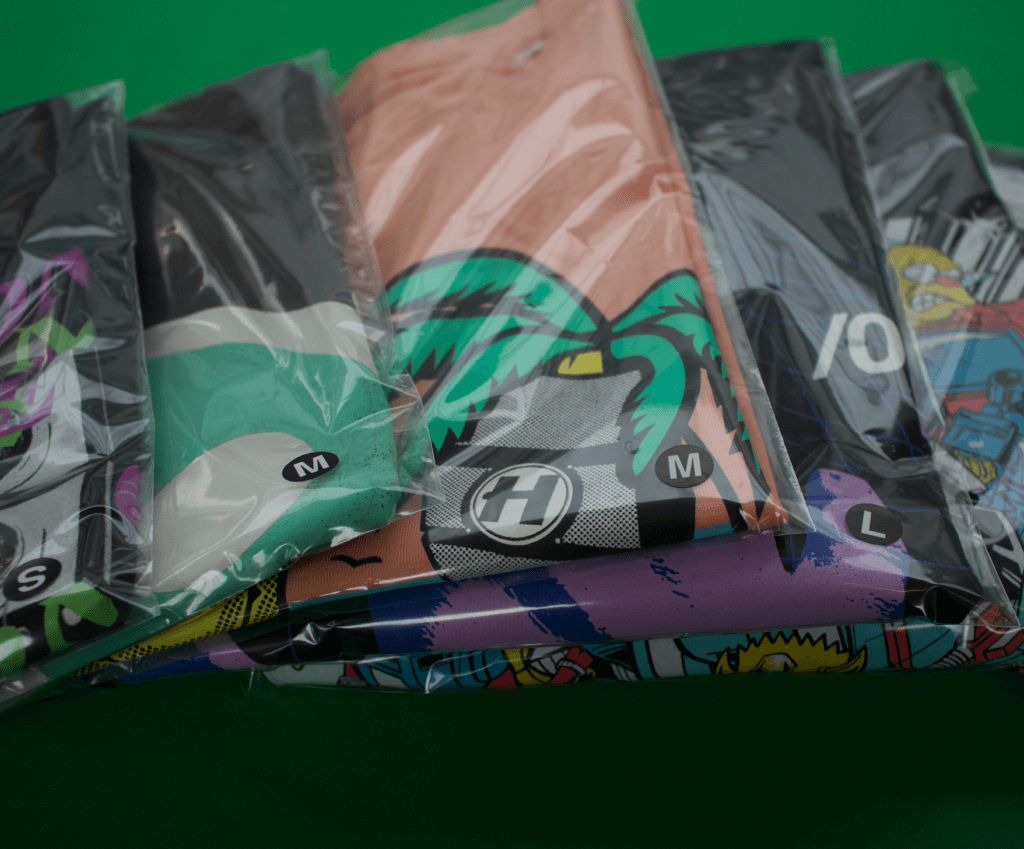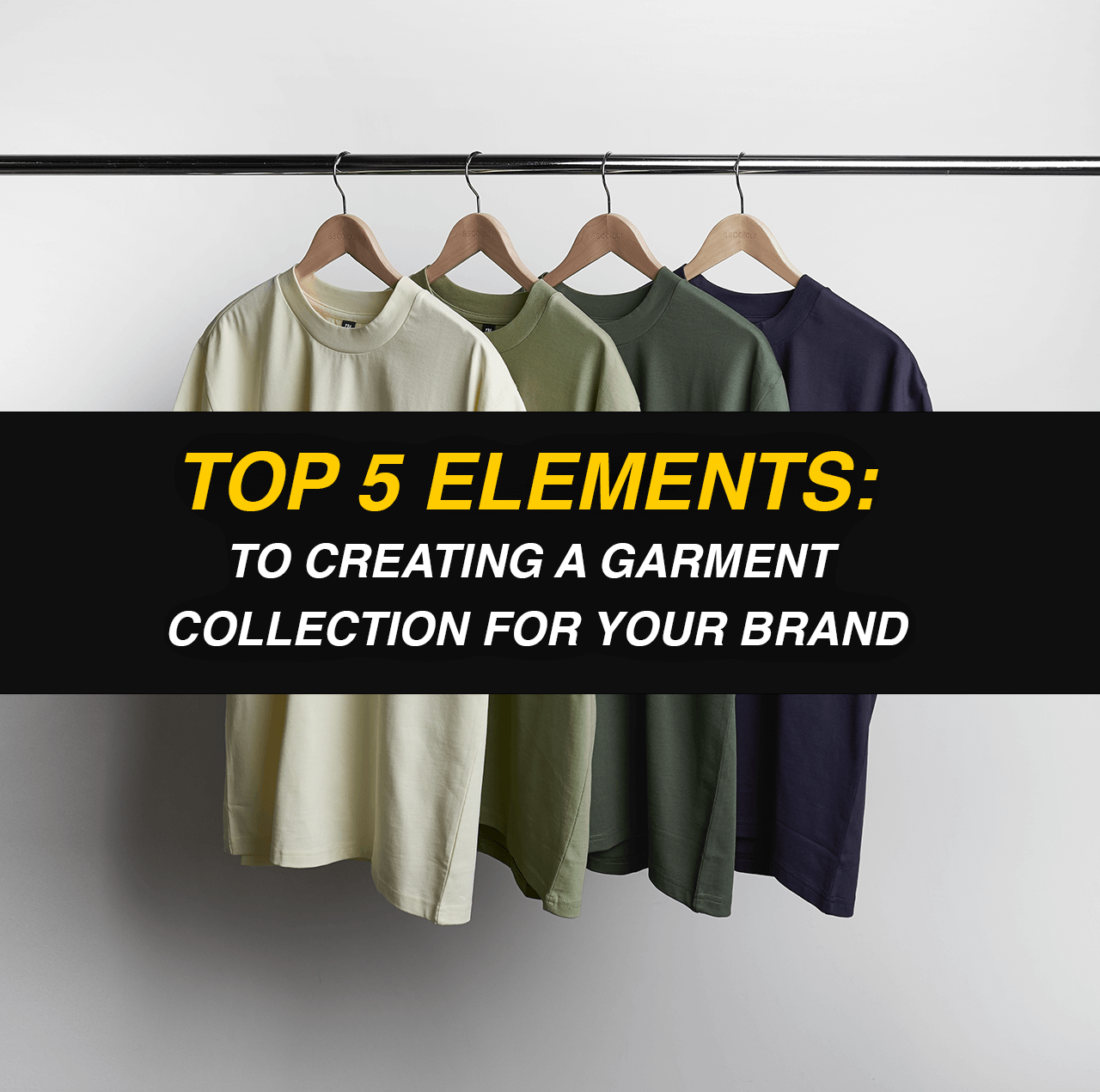Creating custom garments for you brand, can provide benefits including building your brand identity and providing an additional revenue stream, but of course as with most things in business there are many things to consider. In this short series of posts we explore and guide you through the basics of garment customisation, this week it is the main choices to be made about creating the garments themselves. Of course you want to create unique customised garments that will make your brand stand out, to achieve this, there are five key things to consider: Garment Types, Garment Brands, Print Methods, Embroidery, and the all important Finishing Elements. In this article, we’ll explore each of these factors.
Garment Types
The first thing to consider when creating custom garments is the type of garments you want to use. There are a lots of great wholesale blank options available, including t-shirts, hoodies, sweatshirts, and hats to name a few, but are you creating a small selection or a full collection? Maybe you want a variety of garment types to give people multiple purchase options. Have a think about your brand’s style and target audience when choosing the right blend of garment types.
Sustainability is becoming a more important factor in people’s buying choices, so bear this in mind also as it can go a long way to helping create loyalty and a brand identity and some Brands like Stanley Stella, Continental and AS Colour have some excellent organic and carbon neutral garments.
With colours it is always useful to start by thinking about the basics, whites, blacks and greys as they sell well for a reason, but don’t be perturbed to experiment with colour especially if it matches you brand ID as it can you make you stand out from the crowd. As well as ust knowing your market, researching on trend colours for a specific season can help guide you with what might be popular.
Garment Brands
There are lots of excellent garment choices for the people to create retail level clothing collections these days. AS Colour, Stanley Stella and Continental Clothing are the main 3 brands we see people using at the moment. They all have a large variety of garments including t-shirts, sweatshirts, Hoodies and headwear and many are organic and sustainable options also. They all provide top level quality and a variety of weights and fit so the choice comes mainly down to personal preference, to make these decisions it’s best to see them in the flesh, so either popping in to see us or ordering some samples is the best way to narrow this down.

Print Method
Once you’ve chosen the right garment type, the next thing to consider is the printing method. There are several options available, including screen printing, direct-to-garment printing, and heat transfer printing. Each method has its own pros and cons, so it’s important to consider factors such as cost, quality, and durability when choosing the right printing method for your needs.
Although DTG is becoming very popular, screen printing is still by far the number one method for garment customisation due to it’s adaptability, durability, super bright colours and the cost benefits when ordering reasonable volume amongst other reasons.
DTG has it’s place for sure, it’s great for very low volumes and for photographic images or designs with huge numbers of colours, so work’s really well for print on demand.
Transfer printing is mainly used for specific specialist purposes where screen or DTG would be difficult to execute. It generally isn’t the number one choice for street or casual wear but is great for sportswear and other specialist fabrics and also inside neck printing/labelling.
Embroidery
Another way to customise your garments is through embroidery. Embroidery can add a touch of elegance and sophistication to your custom garments. Consider the style and tone of your brand when choosing the right embroidery design and try to not make these design too detailed as embroidery is not as detailed a finish as print. Additionally, think about the placement of the embroidery on the garment to ensure it enhances the overall look and feel of the garment.
Garments that work best with embroidery are garments with thicker, less stretchy fabric so it can hold the weight and pull of the stitching. Polo shirts, sweatshirts, hoodies and headwear are great garments for embroidery and are regularly used in combination with print positions to add that extra finesse.
It’s best to keep embroidery areas small if the economy is important as embroidery is charged on stitch count and due to the time involved it can get expensive for very large designs.

Finishing Elements
Finally, consider the finishing elements of your custom garment. This can include things like labels, swing tags, badges, patches and packaging. These elements can add a professional touch to your custom garments and enhance the overall branding experience for your customers.
Having your own custom label added to garments is the best way to make your tees and sweats look legit. It instantly adds the validity that you are a serious brand due to the impression a custom labels gives. These are relatively cheap, although there are MOQ’s for the initial order can cost a few hundred pounds upfront.
Inside neck printing is a popular alternative to this and also provides a great unique look without the MOQ’s of woven labels. A lot of wholesale blanks these days just come with generic unbranded size labels so there is not always the need to remove the original.
Patches and badges, can be a great way to add the impression of value to your collection. These can be bought in relatively low MOQ’s and can be used across multiple items in a variety of positions, so can be very useful.
Packaging like folding and bagging, gives a great first impression when a customer receives an item and makes sure all garments are received box fresh and clean.
Conclusion
Creating custom garments can be a great way to promote your brand and make additional revenue. By considering the factors outlined in this article – garment type, wholesale garment brands, print method, embroidery, and finishing elements – you can make informed decisions and create custom garments that truly represent your brand. Feel free to get in touch with us for any further guidance, we are always happy to help.




